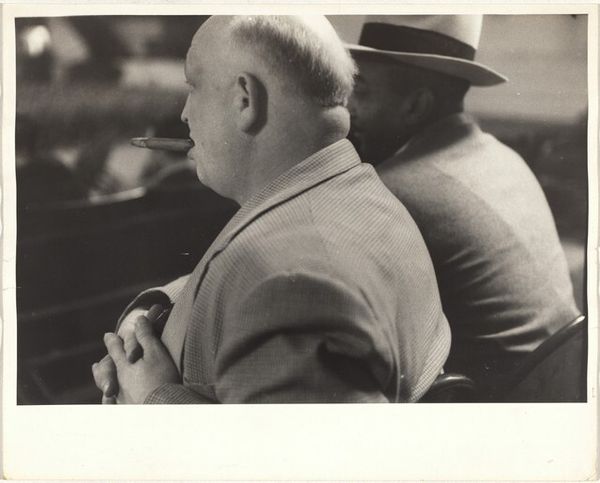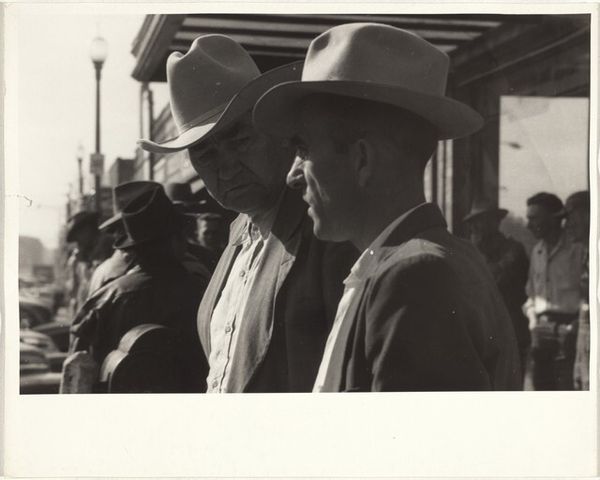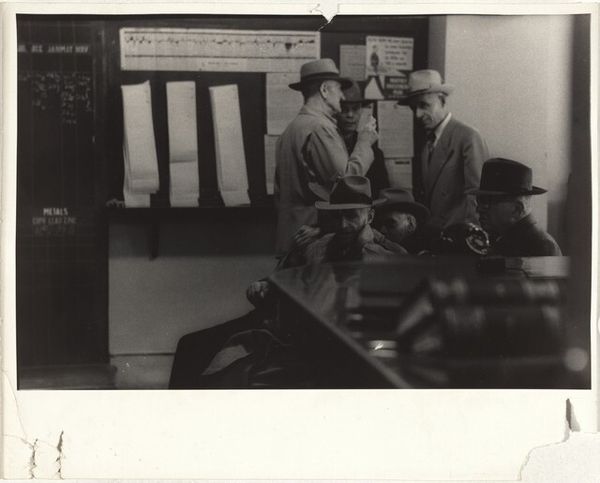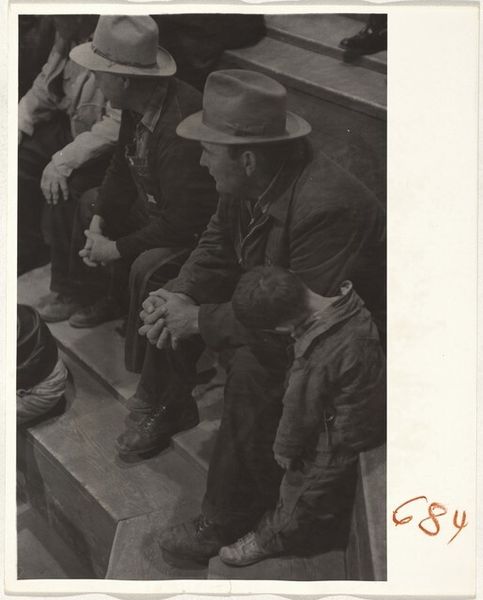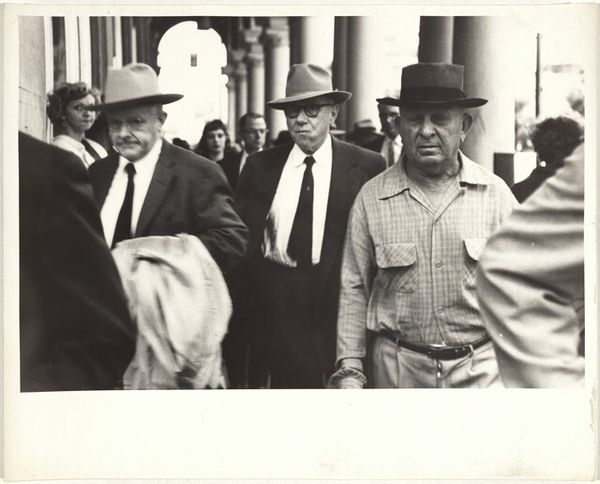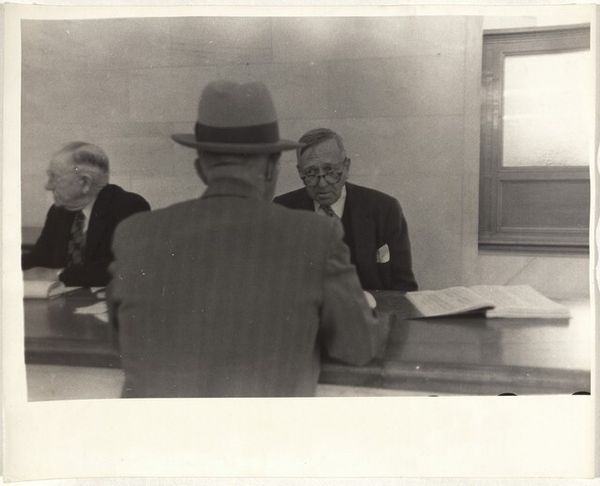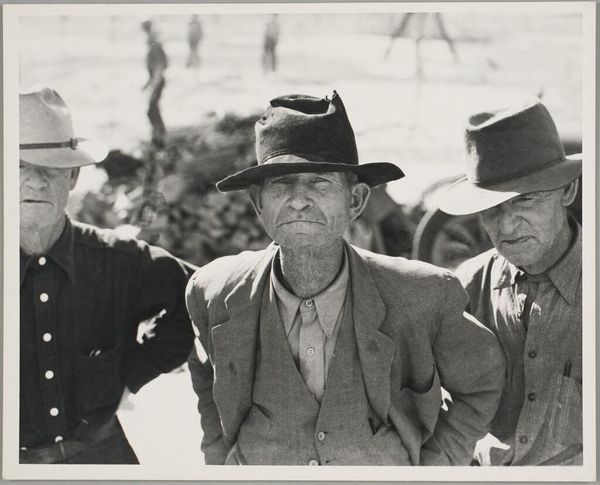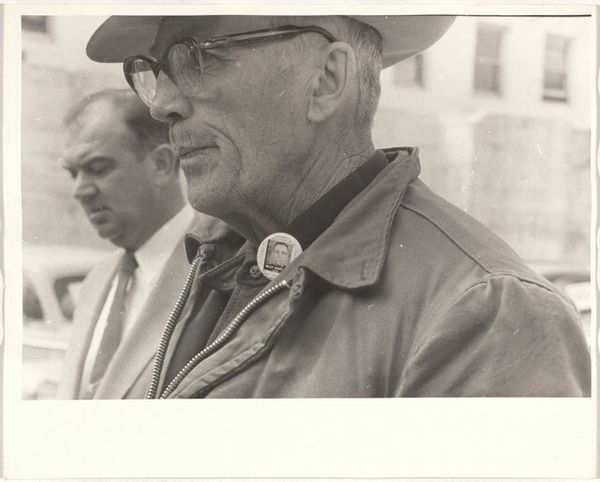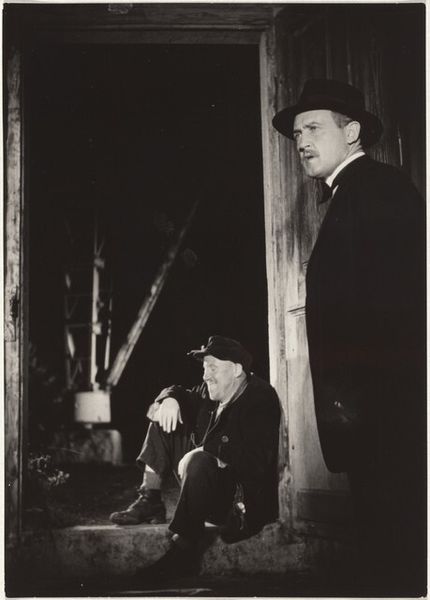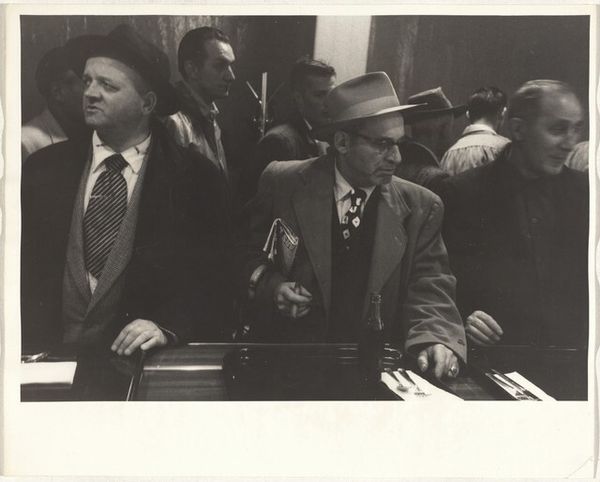
Dimensions: sheet: 20.2 x 25.3 cm (7 15/16 x 9 15/16 in.)
Copyright: National Gallery of Art: CC0 1.0
Curator: Robert Frank's "Two men--Omaha, Nebraska," taken in 1956, strikes me as intensely stark. There's a rawness that pulls you in. Editor: It's the texture of the silver gelatin print itself, isn’t it? That slight graininess emphasizes the grit of daily life. The high contrast and simple composition directs our eye directly to the men and their attire, which speaks volumes about class and labor in mid-century America. The manufacturing process allows for quick reproduction, expanding viewership... It makes it art that belongs to the street, really. Curator: Absolutely. What intrigues me is how Frank captures a specific moment in post-war American society, offering a window into social structures and the subtle power dynamics that existed. The older man is wearing a suit, looking rather tired; while the younger one looks on dressed down. You know, this reminds me a bit of some of the social commentary you'd see in the Ashcan School. Editor: You can really feel the pulse of that era. But look closely at their clothes – the crisp suit, the worn work shirt. Where were these clothes made, under what conditions, and by whom? The whole image brings these hidden networks of labor and commodity exchange into sharp focus. This image acts as a social document but only after its material construction allows it. Curator: Precisely, the everyday realities of ordinary citizens are at the heart of this photo, aren’t they? Think about the politics of representation here too. Who is given a voice? Whose stories are considered important enough to be preserved? Frank, though an outsider himself, provided a particular perspective, framing these men against a relatively empty background to tell something unspoken about this space and period of time. Editor: Yes, and thinking about photographic history, it also invites us to ask what makes photography art at all, doesn't it? How did Frank navigate the industrial processes required, in order to become "artist" rather than a simple "factory worker." It blurs lines by showcasing its construction so readily. Curator: That’s a compelling angle. This work then is far from just a snapshot. It’s a historical artifact and a visual commentary. Editor: Indeed. For me, this image isn't just about the 'who' or 'where,' but very much about the 'how' – the materiality and the labor that brought this commentary into existence in the first place.
Comments
No comments
Be the first to comment and join the conversation on the ultimate creative platform.
